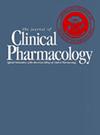Think Rare, Think Inside and Out: Simple Question-Based Approach to Complex Rare Disease Drug Development.
IF 2.3
4区 医学
Q3 PHARMACOLOGY & PHARMACY
引用次数: 0
Abstract
Rare disease drug development follows the same principles as in common diseases, that is, the need to meet the statutory standards for safety and effectiveness. However, viewing this through the lens of the benefitrisk profile, given the unmet medical need, regulatory bodies may exhibit flexibility in exercising scientific judgment on whether the evidence qualifies to have met the statutory standards. Figure 1 captures the principle toward rare disease drug approval, which is balancing the unmet medical need and feasibility of evidence generation versus the evidence package. As further illustrated in Figure 1, to balance the evidence package against the unmet medical need and the feasibility, sponsors have to strive toward increasing the weightage of what is known, the certainty box, and reducing what is not known, the uncertainty box. As discussed in the articles within this issue, rare diseases possess unique traits, many of which are not essentially mutually exclusive: small sample size, heterogeneity of the affected population, limited understanding of the disease pathophysiology, and natural history.1–9 It is steadily becoming common knowledge how the multiple traits of rare diseases can complicate drug development; currently, there are >9000 serious and life-threatening rare diseases with not a single therapeutic option.1 While common disease drug development programs are derisked through a stepwise approach using phase 1, 2a, 2b, and 2 phase 3 studies, rare disease drug development programs may follow an accelerated development paradigm. For example, the clinical development plan may constitute a phase 1 followed by a single phase 3 study or even a seamless clinical trial that serves as phase 1 through phase 3. This nontraditional development pathway not only leads to limited data packages with inflated uncertainty but also can exponentiate common drug development issues faced by sponsors. From a benefit-risk context, all these traits and their associated challenges ultimately amalgamate and create barriers in confident decisionmaking for both sponsors and regulators. Clinical pharmacologists can positively influence decision making by reducing uncertainties through establishing a link of causality throughout the continuum of drug development.10 This link of causality is hypothesized to allow clinical translation with confidence and establishes consistency of clinical trial observations with biological rationale. To create this link, a quantitative framework needs to be conceptualized early. Clinical pharmacologists need to integrate internal and external data using relevant tools that provide insights into the important paradigm of right patient, right medication, and right dose. In rare diseases, we need to dig deeper. For example, what is known about the sources of heterogeneity in the small sample size? How is short-term response linked to long-term outcomes? How is the long-term outcome defined? What is the effect of the disease and the drug on different components of the shortand long-term outcomes? Can the end point be further optimized? What is the minimum clinically important difference? Are there external data available with which we could supplement the evidence package, and if so, what is the relevance and quality of the data?思考罕见,从内到外思考:复杂罕见病药物开发的简单问题方法。
本文章由计算机程序翻译,如有差异,请以英文原文为准。
求助全文
约1分钟内获得全文
求助全文
来源期刊
CiteScore
5.10
自引率
3.40%
发文量
176
审稿时长
2 months
期刊介绍:
The Journal of Clinical Pharmacology (JCP) is a Human Pharmacology journal designed to provide physicians, pharmacists, research scientists, regulatory scientists, drug developers and academic colleagues a forum to present research in all aspects of Clinical Pharmacology. This includes original research in pharmacokinetics, pharmacogenetics/pharmacogenomics, pharmacometrics, physiologic based pharmacokinetic modeling, drug interactions, therapeutic drug monitoring, regulatory sciences (including unique methods of data analysis), special population studies, drug development, pharmacovigilance, womens’ health, pediatric pharmacology, and pharmacodynamics. Additionally, JCP publishes review articles, commentaries and educational manuscripts. The Journal also serves as an instrument to disseminate Public Policy statements from the American College of Clinical Pharmacology.

 求助内容:
求助内容: 应助结果提醒方式:
应助结果提醒方式:


